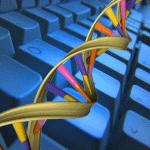Bioinformatics
|
16 february 2018 15:30:03 |
| Comparing side chain packing in soluble proteins, protein-protein interfaces, and transmembrane proteins (Proteins: Structure, Function, and Bioinformatics) |
|
Tweet We compare side chain prediction and packing of core and non-core regions of soluble proteins, protein-protein interfaces, and transmembrane proteins. We first identified or created comparable databases of high-resolution crystal structures of these three protein classes. We show that the solvent-inaccessible cores of the three classes of proteins are equally densely packed. As a result, the side chains of core residues at protein-protein interfaces and in the membrane-exposed regions of transmembrane proteins can be predicted by the hard-sphere plus stereochemical constraint model with the same high prediction accuracies (> 90%) as core residues in soluble proteins. We also find that for all three classes of proteins, as one moves away from the solvent-inaccessible core, the packing fraction decreases as the solvent accessibility increases. However, the side chain predictability remains high (80% within 30°) up to a relative solvent accessibility, rSASA 0.3$, for all three protein classes. Our results show that 40% of the interface regions in protein complexes are `core`, i.e. densely packed with side chain conformations that can be accurately predicted using the hard-sphere model. We propose packing fraction as a metric that can be used to distinguish real protein-protein interactions from designed, non-binding, decoys. Our results also show that cores of membrane proteins are the same as cores of soluble proteins. Thus, the computational methods we are developing for the analysis of the effect of hydrophobic core mutations in soluble proteins will be equally applicable to analyses of mutations in membrane proteins. This article is protected by copyright. All rights reserved. |
| 139 viewsCategory: Biochemistry, Bioinformatics |
 Large scale ab initio modelling of structurally uncharacterized antimicrobial peptides reveals known and novel folds (Proteins: Structure, Function, and Bioinformatics) Large scale ab initio modelling of structurally uncharacterized antimicrobial peptides reveals known and novel folds (Proteins: Structure, Function, and Bioinformatics)Improved protein model quality assessments by changing the target function (Proteins: Structure, Function, and Bioinformatics) 
|
| blog comments powered by Disqus |
MyJournals.org
The latest issues of all your favorite science journals on one page
The latest issues of all your favorite science journals on one page



